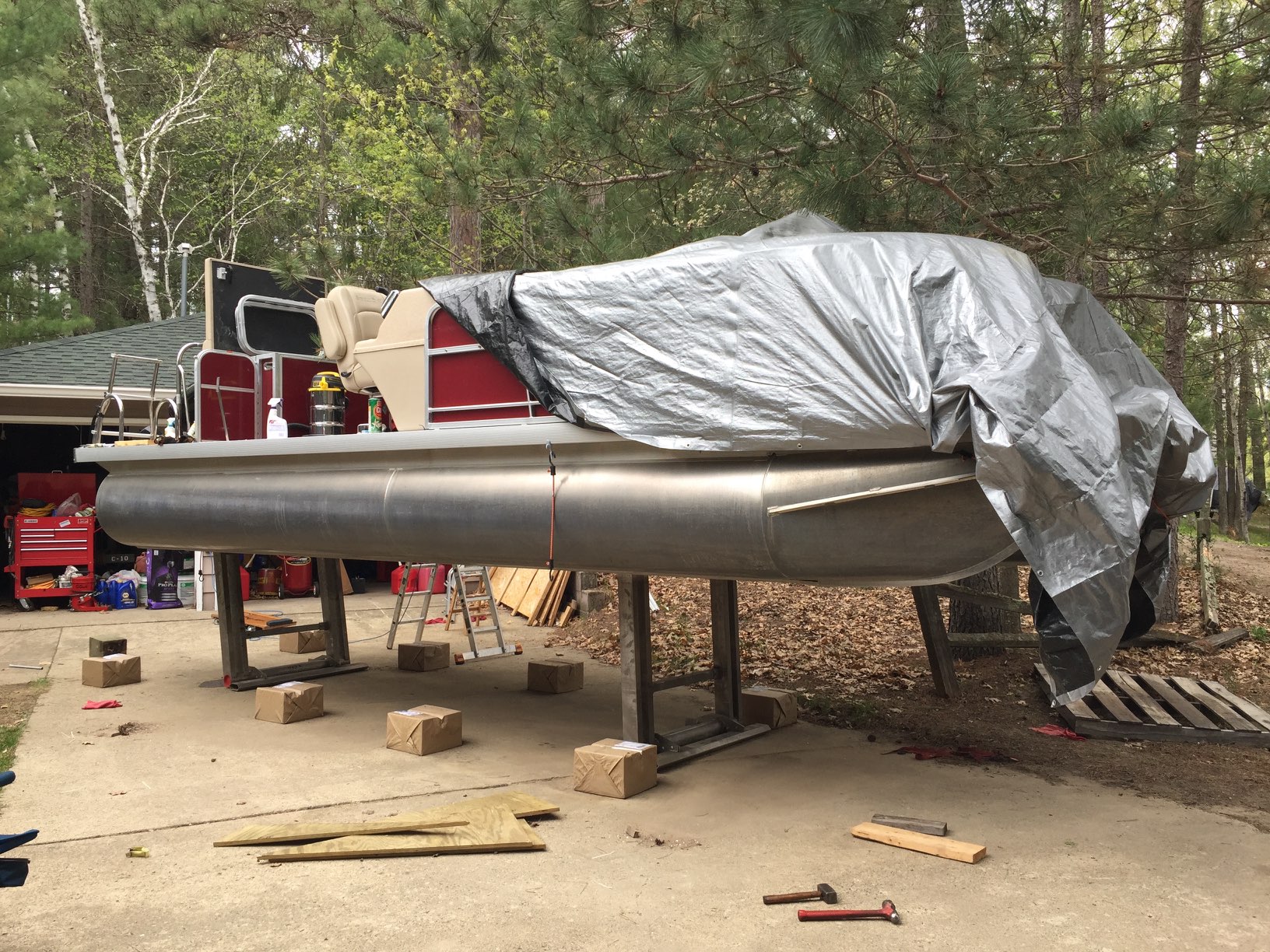MinnesotaEric
Super Member
I think you should check into filling the tubes with foam.
Not a good idea. It'll make the boat heavy and unable to carry as much weight. My current pontoon project which should be wrapping up next week.

I think you should check into filling the tubes with foam.

I'm in agreement here... I wouldn't add that much weight to solve the problem. Fix the crappy patch job. You could do it with good quality sealants to be honest. Just needs to be watertight as it is not a pressurized vessel.Not a good idea. It'll make the boat heavy and unable to carry as much weight. My current pontoon project which should be wrapping up next week.
[/url]
That is an ugly patch and I know nothing about aluminum welding. I do watch tv and that's an easy fix, FlexSeal.:drink:
Pontoons can be tricky to repair with welding. I've had such good luck patching with aluminum sheet and 5200 adhesive/sealant that I'd only consider welding if there was a structural issue or it was a location that would be tough to patch. There are some really advanced fabrication adhesives (used for assembling aluminum car unibodies and boat hulls/stringers, instead of welding) that would be even better than 5200, but in my experience it's plenty strong and it's proven reliable below the waterline.